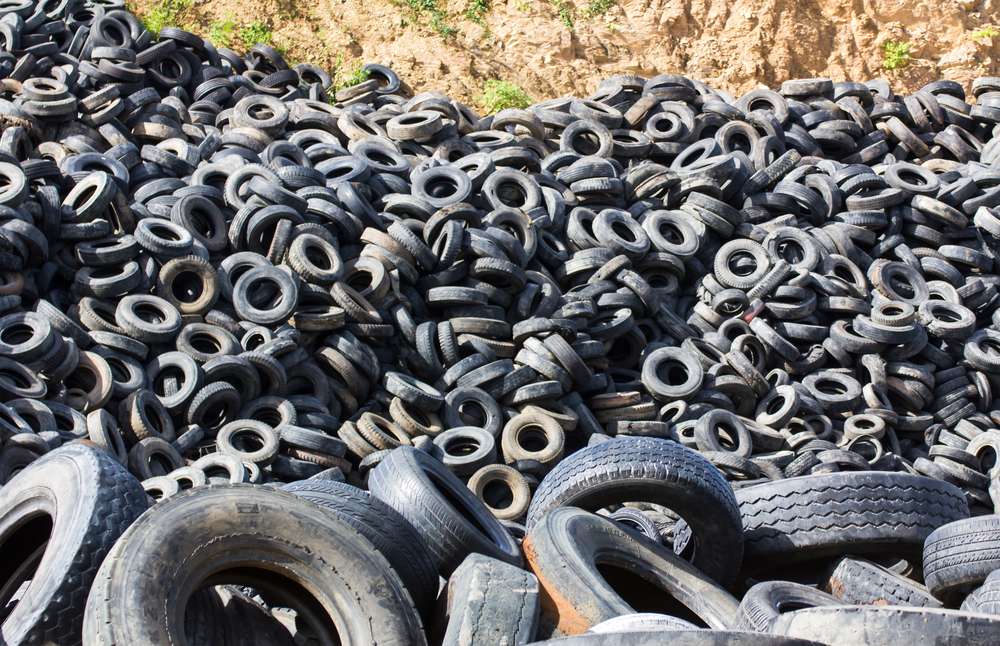Last Updated on April 6, 2023 by Paul S.
I just got back from the big box tire shop where I spent a lot of money on new tires. But I think it was well worth it because my tires were shot! I had just rubbed them on a curb and the side wall flaked off!
While looking at the damage I noticed there was cracking all over the tire. I realized my tires had dry rot because I live in a very hot place! They had lasted me about five years.
Typically your tires will last around the estimated lifetime miles that the manufacturer states about the tire. Some common miles are 50,000 or 75,000 miles.
So if you drive 15,000 miles a year then you should expect a 50,000-mile tire to last you around 3 ¼ years. If you don’t drive that much your tires should be inspected around year 5 in temperate climates and 3 years or earlier if you are in hot climates. Just the age of the tire can make it unusable!
But, there are a lot of factors that can reduce that time!
Read on to learn more about your tires and how to extend take care of them!
Table of Contents
What can affect how long your tires last?
While each driver and tire is different there are some major factors that can affect how long a tire can last.
Drive distance Per Day
The top reason that can affect the years your tires should last is drive distance per day.
If you have a long commute and also spend a lot of time on the road for work you can expect your tires to wear out on you compared to someone that works from home.
Weather
The location where you drive can significantly affect the life span of the tire. For example, in hotter climates, tires are exposed to the extreme heat and sun for extended periods of time. This can increase the deterioration rate of your tires.
The same can be said for the extreme cold. Freezing temperatures and sudden impact in the cold can cause cracking of rubber.
Spinning your tires on ice and snow while trying to get traction can cause significant wear to your tires thus affecting the life span.
Age of your Tires
A tire can have a lot of tread left but because of the age of the tire, it could be dangerous to drive. Factors like the weather help play into the aging factor by increasing the deterioration of the rubber on your tire whether you drive it or not.
The biggest factor in tire aging is oxidation. The longer the tire is exposed to oxygen, which it is at all times, the more it becomes dried out, stiffer, and this leads to cracking. Oxidation is a common process that can deteriorate many things.
If you want to deep dive into the aging of tires check out this post by Liveabout.com.
Tire Maintenance
Tire maintenance is an important factor in maintaining the years the tires should last. Here are some of the top maintenance items that you should be on the lookout for.
Tire pressure levels
Maintaining a low tire pressure causes excessive wear and if it is too low could cause your tire to come off the rim.
There can be savings at the gas pump too if you maintain the proper tire pressure. Running tires flat causes more friction and makes your engine run slightly harder which causes more gas to be used up.
Tire Rotation
As you drive your tires can wear differently depending on where they are located. As long as you rotate the tires this can even out the wearing surfaces and avoid developing bald spots early on.
Typically it is best to rotate your tires every 5,000 to 7,000 miles.
Wheel Alignment
Wheel alignment is necessary to ensure your tires are on center and pointed in the correct direction. If the tires ever stray from that correct location then unusual tire wear can occur causing the life of the tire to be reduced.
It is recommended that the alignment is checked every year or after a significant impact. Hitting a curb or heavy debris on the road while going at high speeds can throw off the alignment slightly.
Bad Driving Habits
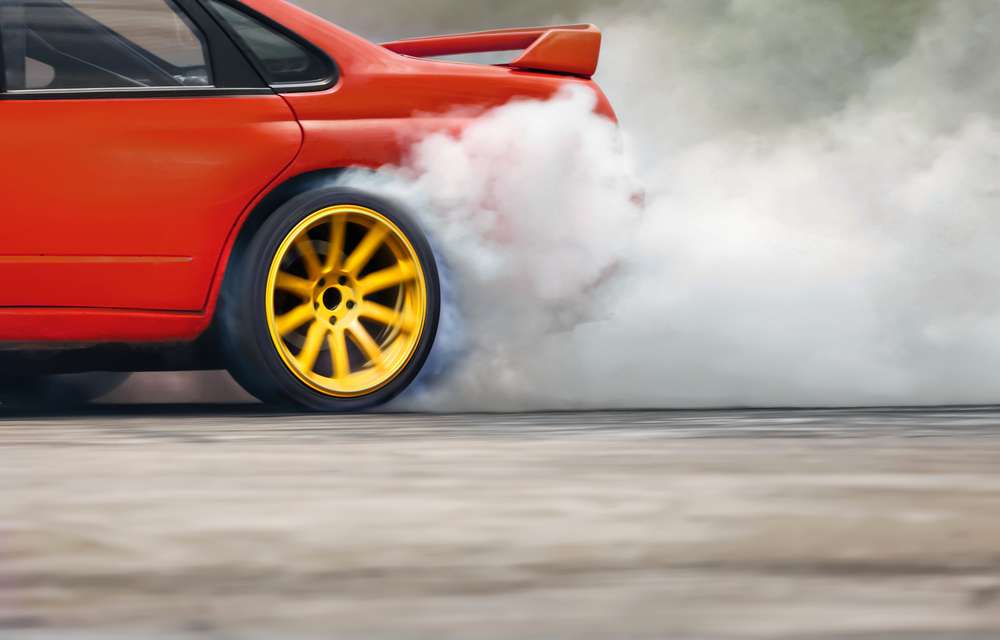
Bad driving habits such as squealing your tires upon take-off, high-speed cornering, and quick braking can all reduce the years your tires last. These cause your rubber to come off quickly in spots and wear down.
Also driving too fast and hitting a curb or objects could cause a tire to blow out sending your tire to a quick death.
Symptoms of Bad Tires
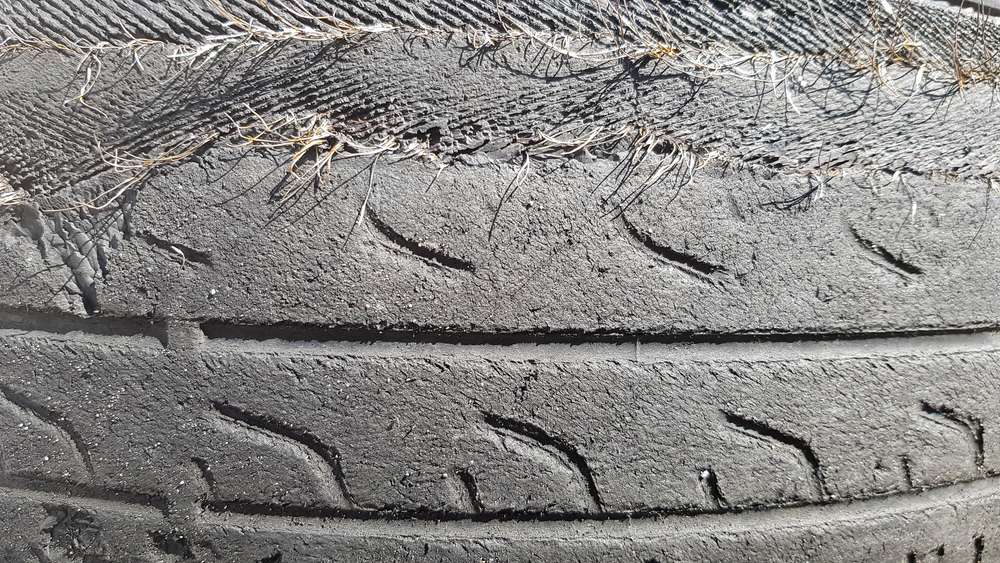
Below we will discuss some things to be on the lookout for if you think your tires are starting to age or wear out. If you see any of these it is recommended to take them to a professional to get their opinion.
The last thing you want is to be driving on the highway and something happens to one or all of your tires.
What is Tire Dry Rot
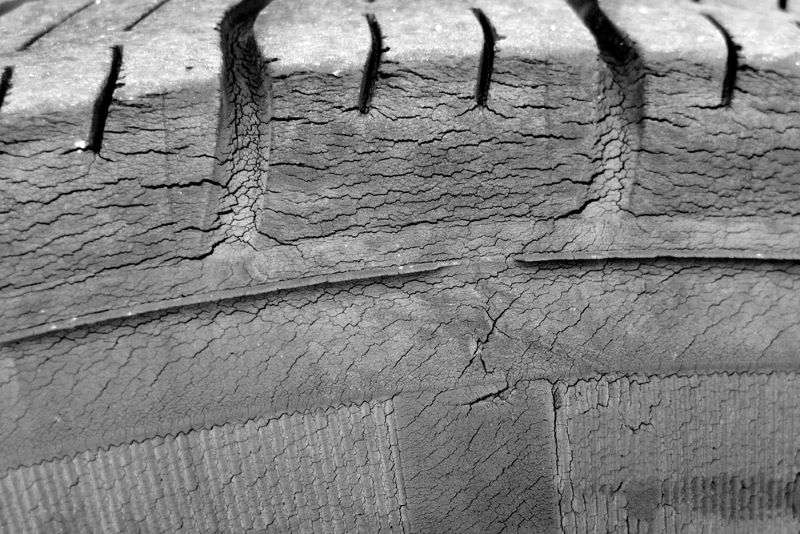
Tire dry rot typically occurs when a tire has reached its shelf life and oxidation and sun damage have caused it to start cracking in many places. You will see cracking along the sidewall and even the tread cracking at the base of each section.
The rubber will start to become very brittle and can come off the tire easier. If you happen to scrape it against a curb at this point, sections of the rubber could come off leading to exposure of the tire wires. Complete failure could be next.
Appropriate Tread Depth
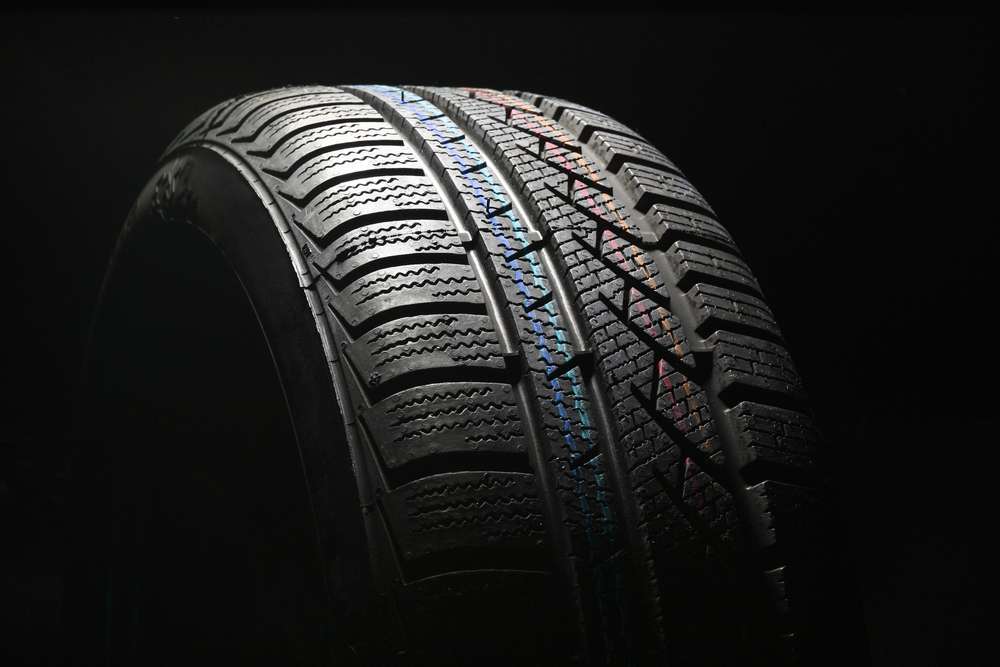
The minimum tread depth that is allowed legally is 2/32 of an inch.
The quickest way to test the depth of your tire is the penny test.
- Use a penny and insert it in the tire tread with good ol Abe Lincoln’s head pointing down to the tire.
- Now drop down so your eyes are level to the point where you have the penny and see if you can see Lincoln’s head.
- If you can see his entire head, it’s time for new tires!
- If you can’t see his head or can only see some of his head then you may have some life left in the tires.
- This is not the only indicator of the well-being of a tire but it is a great indicator of tread life.
- In some newer tires, there are indicator bars that appear when your tires have worn down to the replacement level. At this point, you should be in the market for new tires.
Here is a quick video from Pep Boys on the penny test to make sure you do it right. It’s short I swear!
Tire Sidewall Cracking
This is the easiest one to spot on your daily walk to your car. The sidewall is the part of the tire that is most exposed to you and it is located from the outer edge of the tire to the connection to the rims.
If you notice any cracking or chunks missing out of the sidewall a further inspection of the tire should be performed. It also could be signs of a tire blow out and a professional should be consulted right away.
Tires FAQ
How Much Does It Cost To Replace A Tire?
Tire prices can range a lot. You can find cheaper tires for smaller vehicles at around $60 to $70 per tire, but if you wanted a reputable manufacturer you could pay $120 per tire.
If you have a four-wheel vehicle you are looking at $160 to $260 just for your basic on road tires. If you want aggressive off-road tires you could be starting at $300 per tire and working your way up!
But the cost does not stop here. Do not forget about labor and other items. From my recent trip to the shop here are some of the costs:
- Labor was $22 per tire
- Tire Disposal was $3.50 per tire
- Connect to tire sensor was $7.50 per tire
They also try to sell you on nitrogen and extra insurance which I declined. Nitrogen is a waste unless you have the time to always refill with Nitrogen.
So you can easily spend $370 to $1600 if you go for expensive tires.
Conclusion – How Many Years Should your Tires Last
So to answer the question of how many years should tires last, the answer, unfortunately, is vague due to all the factors.
But if you don’t drive an insane amount of miles expect 3 to 5 years, but make sure to always take a look at them as you are approaching your vehicle. If you can’t do that then your vehicle maintenance shop should usually do free inspections for you and can give you recommendations.
Check out our post on off road tread patterns if you are looking for something for you SUV!
Off Road Tire Tread Patterns
Last Updated on February 14, 2023 by Paul S. Tire tread patterns are important to whatever surface and weather you are driving on and in. Off road tire tread patterns…

